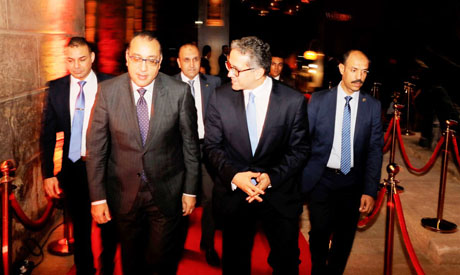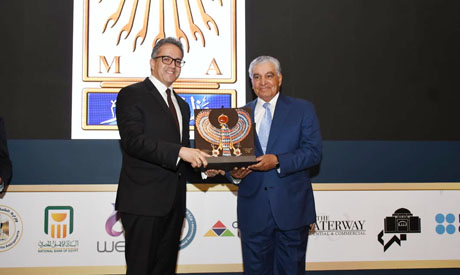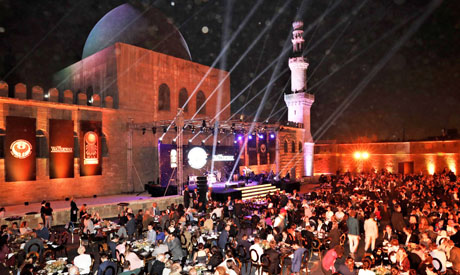The 12th International Congress of Egyptologists (ICE), inaugurated last week under the patronage of Egypt’s Prime Minister Mustafa Madbouli, will remain in the hearts and minds of all its participants, speakers and attendees.
Not only because is it one of the world’s most important scientific and academic conferences in the field of Egyptology, but also because this year’s event was remarkable for its archaeological trips and tremendous musical nights in Cairo.
The ICE is held every four years to discuss the latest findings in Egyptology. This is the fourth session of the Congress to be hosted by Egypt. The previous three were the first ICE in 1976, the fifth in 1988, and the eighth in 2000. It was last held in Florence in Italy in 2015, and the 13th session will take place in Leiden in the Netherlands in 2023.
From 3 to 8 November, 600 scholars, archaeologists, heritage experts, Egyptologists and students from Egypt and 30 foreign countries gathered at the 12th ICE venue to share knowledge about Egyptology and solve the secrets of the ancient Egyptian civilisation, considered as the oldest and one of the greatest civilisations in the world.
A collection of 375 scientific topics and research papers were presented during the ICE’s 12th session, covering Egypt from its earliest times from the Nagada III C period (4,500 BCE) to the Roman era (up to the seventh century CE). From the Eastern Desert to the Sinai and the Nubian sites, Egypt’s history was analysed in depth by archaeologists and historians.
The themes of the presentations were diverse, ranging from the ancient landscape of Egypt, its water network with the identification of past harbours influencing the economy, interactions with other cultures and civilisations, and the reception of the Pharaonic culture in ancient and modern times.

Madbouli and El-Enany at the ICE gala dinner
Details were discussed that enabled an understanding of the thought processes of the ancient Egyptians, their social life and history, the ancient Egyptian hieroglyphic language, ancient texts and documents, and the décor of coffins and funerary culture. Domestic life and architecture were also addressed, including aspects of daily life and vernacular urbanism.
State-of-the-art methods used in archaeology and scientific techniques used in site management, conservation and preservation, and museology were also presented.
At the opening ceremony of the Congress, four prominent Egyptologists were honoured for their efforts in Egyptology. They were Stefan Seidlmayer from Germany, Sakuji Yoshimura from Japan, Mark Lehner from the United States, and Zahi Hawass from Egypt. The four individuals were awarded an ICE Award in the shape of the golden Horus jewel of Tutankhamun, also the logo of the 12th ICE.
Minister of Antiquities Khaled El-Enany praised the support of Egypt’s president, prime minister and government for his ministry and the field of archaeology in general, which had enabled it to complete and inaugurate a series of museums and archaeological projects such as the Sohag National Museum, the Elephantine Museum in Aswan, and the Tanta Museum, as well as the ground-water lowering projects at the Kom Al-Shoqafa Necropolis in Alexandria, Kom Ombo in Aswan, and the Osirian in Akhmim and other projects.
El-Enany said that in the near future the ministry would inaugurate the main Jewish Synagogue in Alexandria after restoration, as well as the Baron Empain Palace in Heliopolis and the Djoser Step Pyramid in Saqqara.
He underlined the importance of working collaboratively between the ministry and scholars. He also emphasised his disappointment at the lack of response from Egyptologists when Egyptian antiquities were sold on the international auction market, hoping for warmer support and dedication to the preservation of the Egyptian heritage from its long-standing partners in research.
He invited the scholars to express their interest in collaborating and associating themselves with the latest activities of the ministry, especially the shaping of its website and the scientific content of its museums, giving scholars a platform for accessible outreach.

El-Enany awards Hawass
THE CONGRESS: During the opening ceremony of the Congress, Christopher Naunton, the outgoing president of the International Association of Egyptologists (IAE), announced the end of his tenure and welcomed the newly elected president, Willeke Wendrich from UCLA in California.
The keynote speakers were Egyptologists Zahi Hawass and Betsy Bryan. Hawass presented the results of three years of excavations in the Valleys of the Kings and the Monkeys on the west bank of the Nile at Luxor, sites dating to the 18th and 19th dynasties. He shared his passion and expectations for the sites as well as the promising results announced.
Bryan shared the results of the John Hopkins University’s excavation work in Karnak, showing that the goddess Mut precinct was initially designed for Mut, an agent of Re, like Sekhmet, rather than the consort of Amun, a shift that had happened during the reign of king Amenhotep III. Industrial neighbourhoods were also uncovered in the excavations, she said, in a chance to understand sections of the ancient settlement of Thebes.
Both projects were collaborative or aimed to become tools for other scholars working on new trends in archaeology, and they would hopefully result in more collaborative authorship of papers and develop creative hypotheses, the presenters said.
Such projects were discussed in papers under the titles of “Shaping and Changing the Landscape of Western Thebes” by Peter A Piccione and “Silt, Sand and Sherds: Constructing Conceptual Landscapes in Ancient Thebes” By Angus Graham.
They develop tools and resources for new research, underlining the need to take into account the geology of the sites concerned. The evolution of the Necropolis of Thebes was also mapped out by a team using 3D models.
Elsewhere at the Congress, a talk on the context of objects in archaeology and domestic objects found at the site of Tell Al-Retaba showed that few objects were found in their actual utilisation context. Egyptologist Carmen Muñoz Pérez in her lecture on “funerary amulets: a century of research” said that objects discovered in specific locations, such as on mummies, tended to be understudied because they were generalised to a particular category.
Other presentations highlighted the need to acknowledge the absence of predecessor publications, and many presentations referred to works conducted in the past which were never published. New technologies had motivated scholars to critically assess and revisit past publications and the results of sites, the presenters said, with the analysis of such sources proving the need to document recording methods.
Egyptologist Ewa Józefowicz in his lecture revealed that work on the Deir Al- Bahari portico had revealed the name of one of the two boats that once transported the obelisk of Hatshepsut. Bassem Gehad showed in his presentation entitled the “Ancient Philadelphia Necropolis: Preliminary Results on Burial Customs in Fayoum during the Ptolemaic and Roman Periods” that the coffins of the early Ptolemaic period included new information on local topography and one new Pyramid text.

The ICE gala dinner at the Citadel
Under the title “The Change in Reference to ‘his wife’ from hmt.f to snt.f and the Feminine Element in New Kingdom Tombs”, Egyptologist Reinert Skumsnes showed that women in ancient Egypt had been actively discussed through their vocabulary and labels, showing that 18th-Dynasty women were not differentiated from men by skin colour. Susan Thorpe showcased the involvement or roles of women in various social contexts through the study of letters.
During the ICE, the ministry of antiquities organised trips to the Giza Plateau, the National Museum of Egyptian Civilisation, the Manial Palace and the Grand Egyptian Museum. There were also three gala dinners at the Giza Plateau, the Manial Palace, and the Citadel to show the diversity of Egyptian civilisation.
At the closing ceremony of the Congress, Wendrich announced future actions of the IAE as well as the website’s redesign. Professor Faiza Haikal was also honoured for her outstanding work.
Olaf Kaper from the University of Leiden in the Netherlands said the 12th ICE would make it harder for Leiden to organise the 13th round in 2023, as it had raised the bar of the Congress and its events. He presented plans for ICE 2023, to be held in August 2023.
El-Enany expressed his pride in the ministry’s employees and young Egyptologists for the superb organisation of the Congress. He said that the Congress had achieved its goals, which were the exchange of scientific knowledge and experience between Egyptian and foreign Egyptologists who had gathered in Cairo for the sake of Egyptology.
He expressed his pleasure at seeing Egyptians and foreigners bonding together and celebrating during the ICE and gala dinners, describing the event as a whole as an example of equal collaboration and partnership between the Ministry of Antiquities and international scholars.
*A version of this article appears in print in the 14 November, 2019 edition of Al-Ahram Weekly.
Short link: